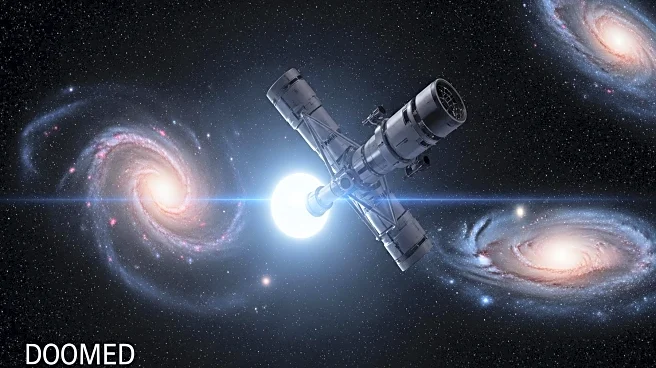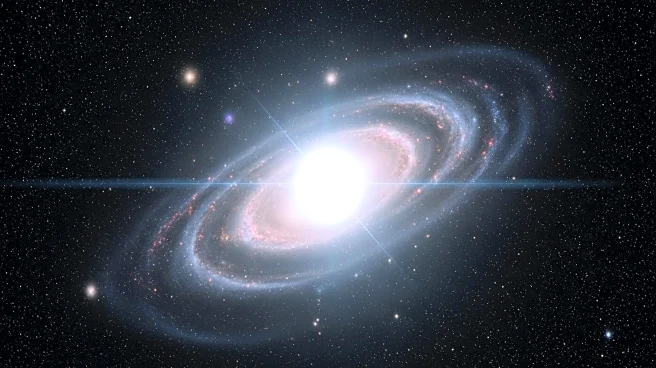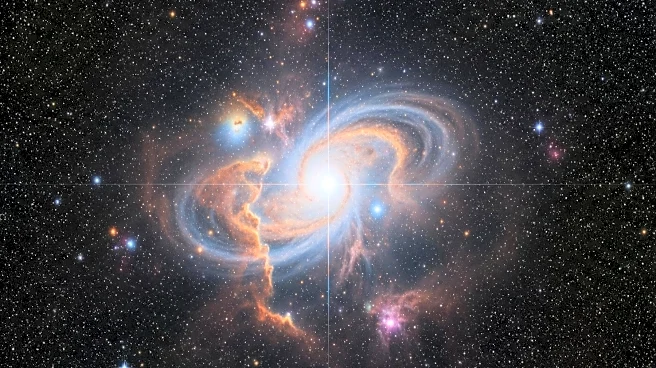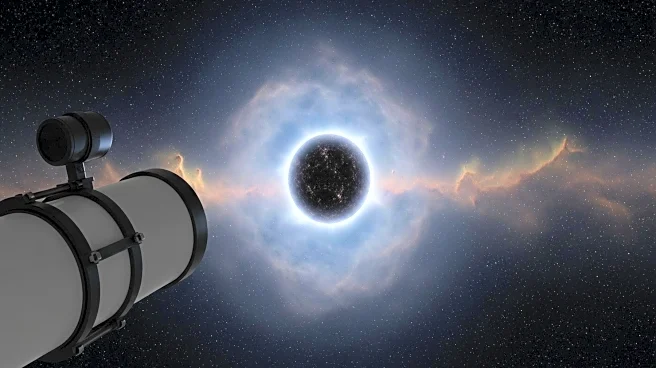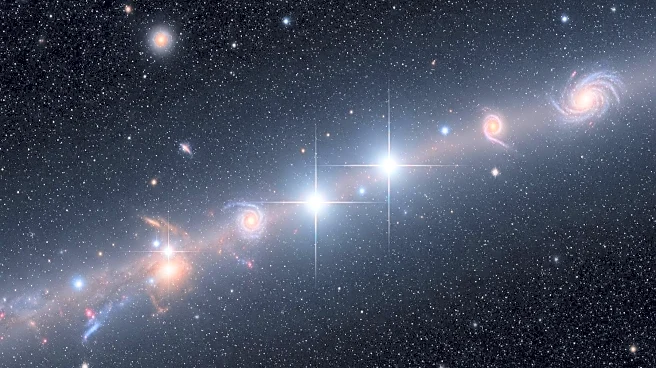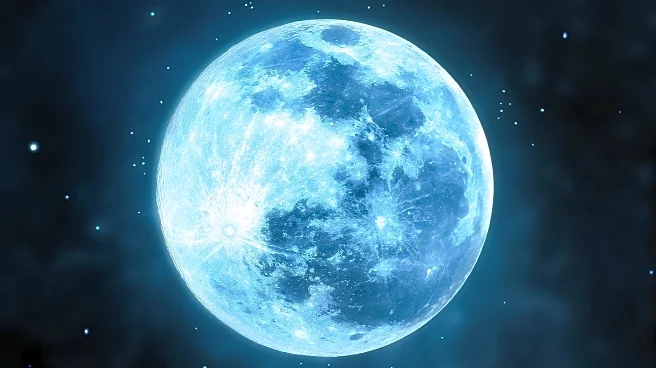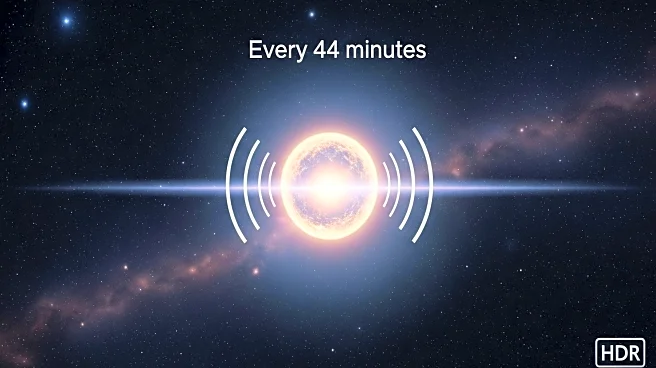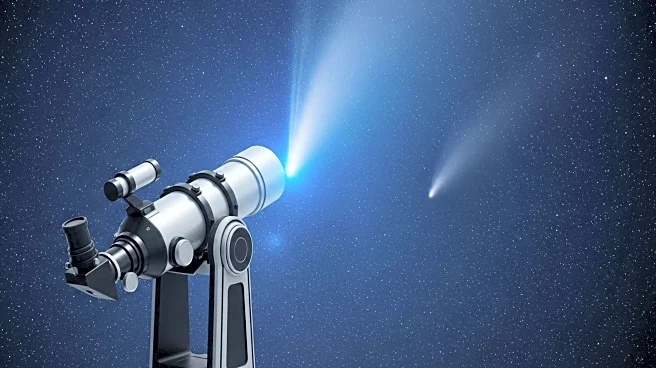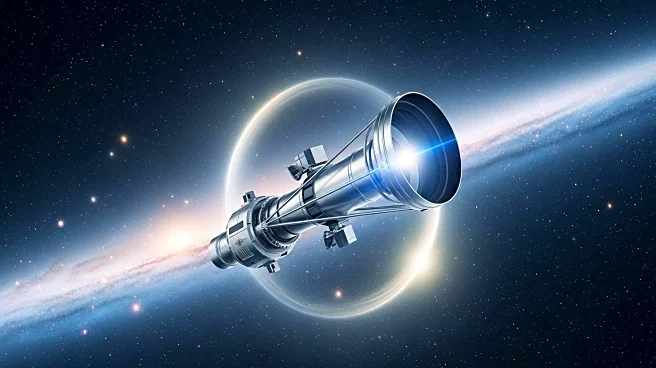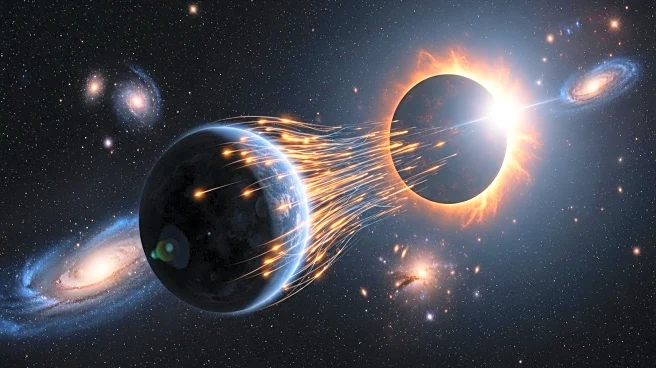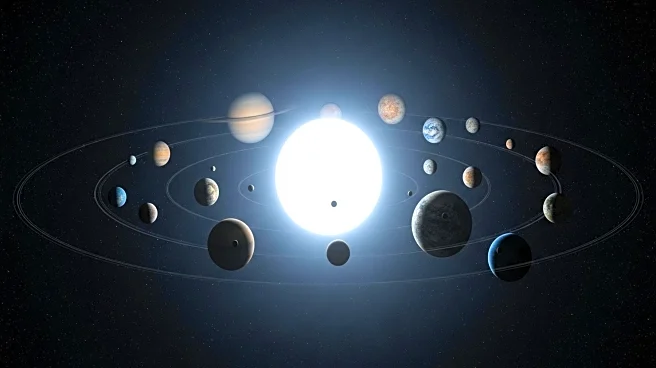What's Happening?
The James Webb Space Telescope (JWST) has captured images of a massive red supergiant star just before it exploded into a supernova, potentially solving a longstanding astrophysical mystery. This star, located in the galaxy NGC 1637, 38 million light-years from Earth, was first detected by the All-Sky Automated Survey for Supernovae in June. The supernova, named SN 2025pht, was identified by comparing historical Hubble Space Telescope data with new JWST images. The study, published in The Astrophysical Journal Letters, suggests that massive red supergiants, which are theorized to cause most supernovas, are often obscured by dust clouds, making them difficult to observe. The JWST's infrared capabilities allowed researchers to see through the dust, providing unprecedented detail of the star's environment before its explosion.
Why It's Important?
This discovery is significant as it provides new insights into the lifecycle of massive stars and the conditions leading to supernova explosions. Understanding these processes is crucial for astrophysics, as supernovas play a key role in the distribution of elements throughout the universe. The ability of the JWST to penetrate dust clouds and capture detailed infrared images marks a technological advancement, offering a clearer understanding of stellar evolution. This could lead to more accurate models of star behavior and the dynamics of galaxies, impacting theories on cosmic origins and the distribution of matter in the universe.
What's Next?
The findings from the JWST may prompt further studies into the nature of red supergiants and their role in supernova events. Researchers might focus on identifying other obscured stars using JWST's infrared capabilities, potentially uncovering more about the lifecycle of massive stars. This could lead to revisions in existing astrophysical models and theories. Additionally, the data could influence future telescope designs and missions aimed at exploring the universe's most elusive phenomena.
Beyond the Headlines
The ability to observe stars through dust clouds raises questions about the nature of cosmic dust and its impact on astronomical observations. This discovery could lead to a deeper understanding of how dust affects light transmission and the visibility of celestial objects. It also highlights the importance of advanced technology in overcoming observational challenges, paving the way for future breakthroughs in space exploration.
